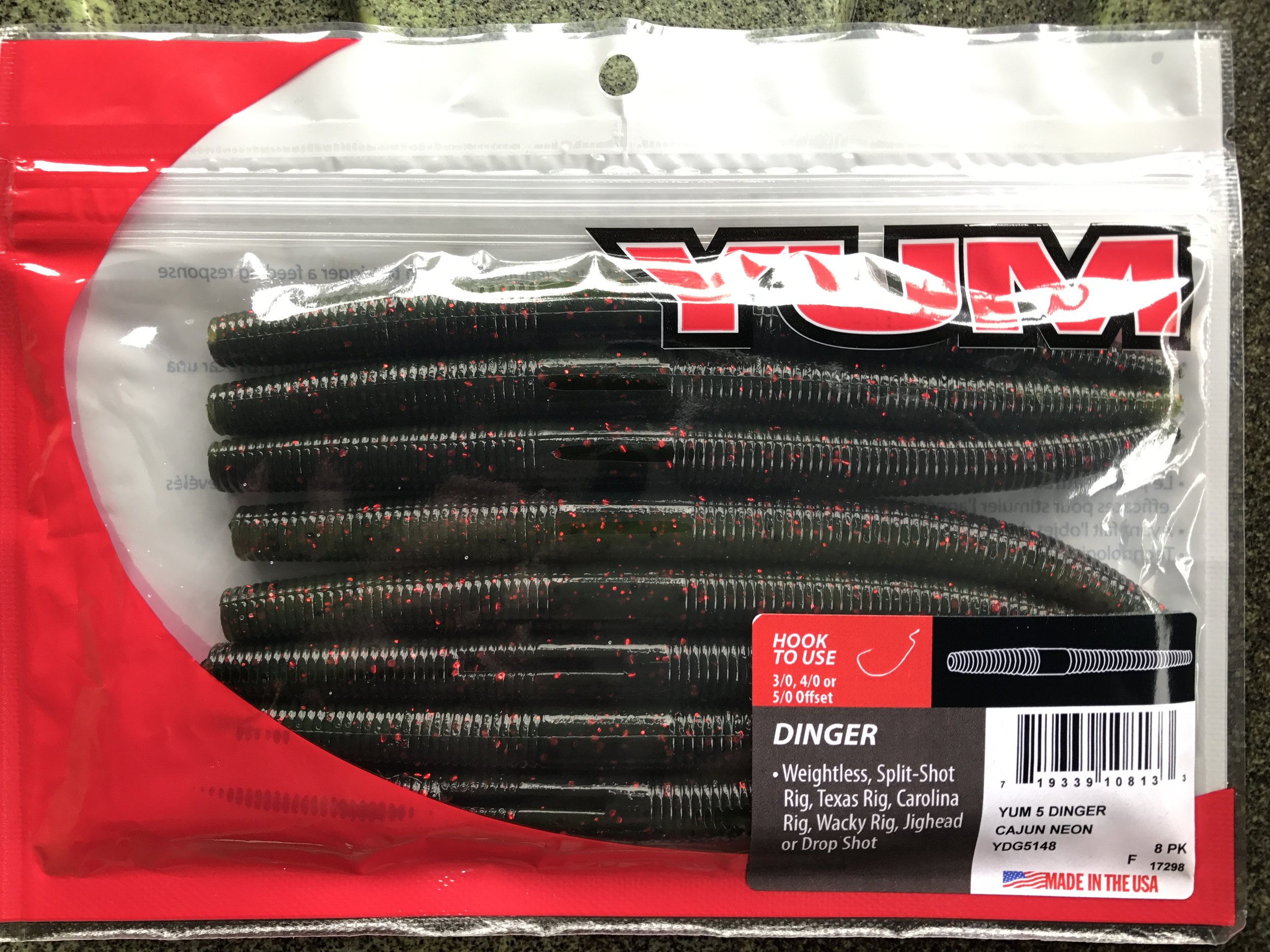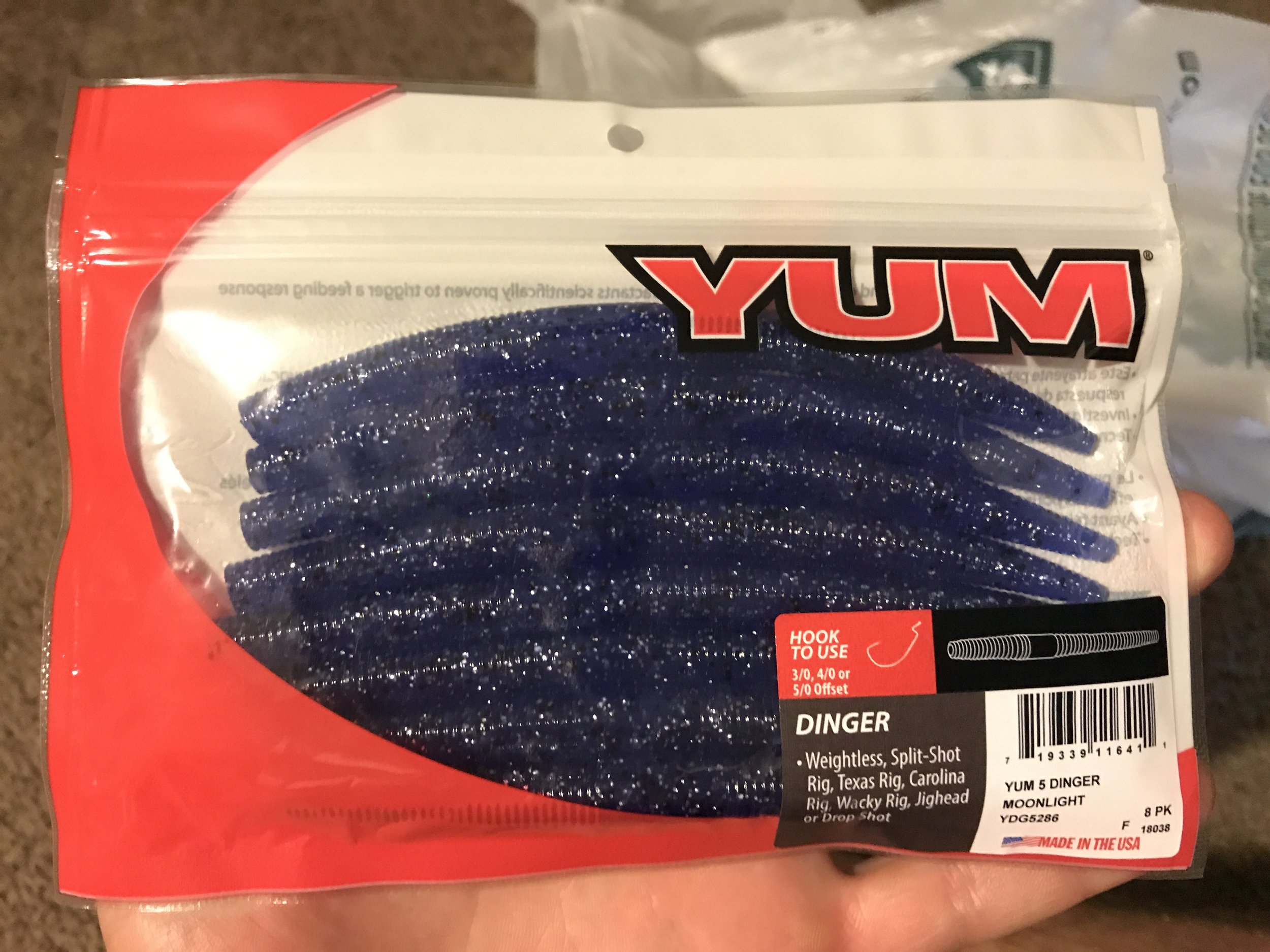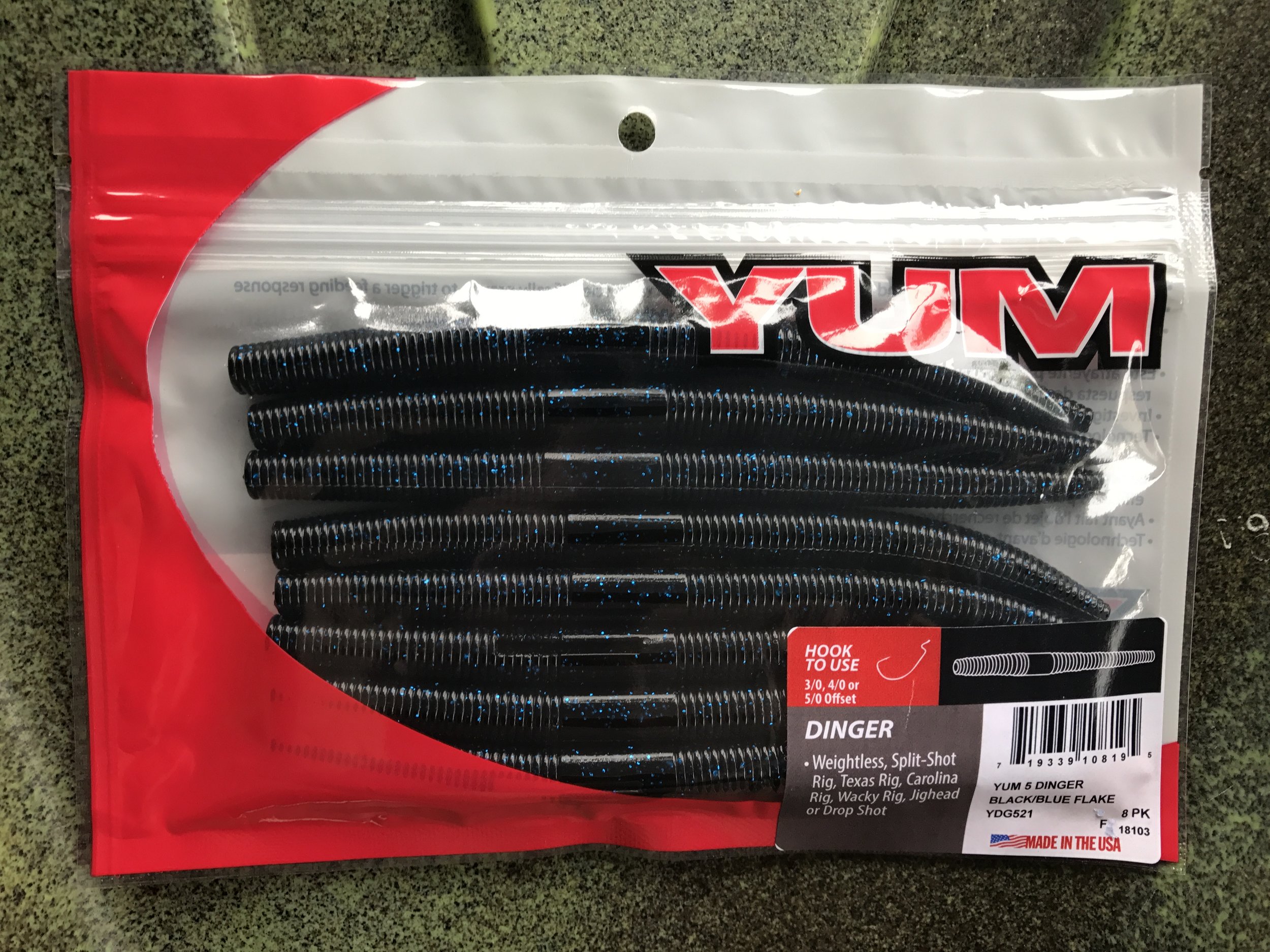Fishing the Worm
How, When and Why I fish the stickbait
When I was first getting into fishing hard, I was only around 14 years old. At that time, I was a busboy at a local pizza joint, making minimum wage for 10 hours a week. With my first Ugly Stik and a one-ball-bearing Shakespeare reel, I would go to my favorite local lake and shore cast with my buddies, usually back-hooking shiner minnows and slamming bass until the sun went down. The issue we quickly ran into was money – minnows were a one-time deal, and they weren’t cheap, especially for a young kid. So what could we do?
That’s when we started using stickbaits.
For the last seven years, stickbaits have been my go-to confidence lure. I reckon I’ve caught more fish on one color of worm than I have on every other technique I’ve ever used combined – there’s just something about the stickbait that always works. In this guide, I’ll be covering some of my favorite worms to throw, when I throw them, how I fish them, and on what kind of equipment I’ve found success. I think that the stickbait can function as not only the ultimate beginner bait, but also a bait of great depth and potential, one that you’ll find me throwing until the day I die.
Types of Worm:
Bear in mind that for this whole guide, I’m referring exclusively to the Senko-style stickbait – not huge bull worms or anything like that, just your standard, soft-plastic stickbait.
Okay, so the anglers here probably know of the worm controversy in the fishing world; do you want to pay the money for the Yamamoto Senko, or save a bit and buy a Yum Dinger or any other worm? In the world of fishing, Gary Yamamoto’s Senko is to worms what Kleenex is to tissues – I called every stickbait a Senko until I realized that the Senko is a model from a brand, not the overarching name of every soft-plastic worm on the market.
So what do I do? It’s pretty simple when you boil the issue down – I think that the Yamamoto Senko is the better worm, but I don’t want to spend the extra money when I buy bulk packages of soft plastics. I’ve seen comparison videos and the Senko undoubtedly outperforms the Dinger with movement on the fall, but after years and years fishing the Dinger, I consistently do so well that I don’t feel the need to upgrade. It comes down to personal choice based off experience on the water – I have friends that swear by both types of worms, and I guess I’m just a Dinger guy.
Colors:
Like all my fishing, I like to keep things simple. I used to mess around with all sorts of colors, but the end result of many years of stickbait fishing has told me that you really only need 3 main colors, or for any soft-plastic for that matter:
-Green pumpkin
-Black and blue
-Some sort of junebug
With these three foundational color groups, you can get everything done you need to. You can cover a range of different conditions, which I’ll lay out below right here:
-Green Pumpkin: When the water is clean and visibility is high, green pumpkin is the most natural presentation that you can offer a bass. It’ll standout from its surroundings just fine, and is your best bet during clear-water conditions to stick some fish.
-Black and Blue: The opposite of green pumpkin. Black and blue excels after or during storms, when the water is blown out with debris and visibility is at its lowest. The dark color allows the bait to silhouette against its surroundings better and ups your chances of getting a bite.
-Junebug: Only making its way into my tacklebox in the last two years, a junebug color worm can bridge the gap between the other two colors, or just bust out fish on its own accord when the stickbait bite is on. I have excelled in both dirty and clear water with this bait, using the same principles involved above; the worse the water clarity, the darker your junebug should be, and visa versa.
With those three colors, you can get the job done. I do frequently throw variations on the common themes, usually by adding a plasma-tail into the mix. My favorite worm of all time is a green pumpkin or Carolina pumpkin Dinger with a chartreuse plasma-tail, which I throw year-round almost regardless of conditions, and which gave me my PB bass last year. Black and blue with a blue plasma-tail works well too. And hey, if you want to throw something entirely different, just remember that the dirtier the water, the darker the bait. It’s not a hard and fast rule as you can almost always land stickbait fish, but it seems to work for me.
Gear:
Simple here. The best part about the worm is that there isn’t a setup that you can’t use it with. Got a G-Loomis NRX combo that you dropped $1000 dollars on? Perfect. Got an Ugly Stik combo that cost you $50USD? Hey, that’s how I caught my PB.
My current stickbait rod and reel combo is a Lew’s Mach II Speed Spool SLP hooked onto a Dobyn’s Fury series stickbait rod. Roughly a $230 combo, and it works like a charm. You want to look for Medium to Medium/Heavy power and a fast action – but most importantly the fast action. The quicker you can get the hook set once you see the line swim off or feel that bump, the better. I like a reel somewhere in the range of 6.5:1 – 7.5:1 for a bit of speed.
Spinning setup or casting doesn’t really matter either. Like I said before, this bait is about as universal as you get in the bass fishing world, and can literally be fished on anything by anyone. So just find a stick and get out there.
How I Fish The Stickbait:
Ah, the meat and potatoes. If you’ve made it this far, you’ve probably noticed that I’m framing the stickbait as the most universal bait available in terms of cost to buy, skill needed to use and overall simplicity. When it comes to fishing the stickbait, I focus on a few things in particular that have shown me great success on the water.
-Fishing the Stickbait Weightless-
My favorite way to fish the worm is on an offset EWG hook, typically a 3/0 or 4/0 Gamakatsu. I thread the hook Texas-rig style to avoid hang-ups on weeds and other obstacles – if you want to use an offset round bend hook for this application as well, that will work just fine, just a matter of personal preference.
Another way to fish this bait that has exploded in popularity, even becoming some folks’ favorite method of fishing it, is the Wacky Rig. Using a plastic O-ring fitted at the center of the bait, a special hook is threaded between the rubber ring and the bait itself at the center of the worm, allowing for an entirely new, yet still weightless presentation. Either way you want to rig it, the principles of weightless worm fishing work the same way.
From my kayak, I like to focus on features. I’m looking primarily for shade, grass-lines, laydowns, pads, or any sort of structure where a fish may be suspending. Personally, my favorite feature to fish with a stickbait is grass-lines, as it gives you a long, pronounced, high-percentage area where a fish will be waiting to ambush passing forage. I’ll typically start by dropping the bait a foot or so into the grass, letting it sit to judge the density of the grass mat or weed bunch I’m casting to, and then gently popping the worm off or through the grass until it clears the obstruction and makes it to open water. From there, I’ll let it sink a bit deeper, with occasional pops, but most of the time is spent waiting for any sign of a strike. The golden area on grass-lines in my experience is usually less than six feet from the edge of the line, where fish can see and feel the bait the easiest and are most likely to strike. The dirtier the water gets, the closer to the mat I’ll be putting my bait.
Other features will usually get the same treatment. If I find a pocket of shade, I’ll cast to it a few times, maybe one slow and steady cast followed by a few varied retrieves and I’m on my way. I’ll work down the sides of laydowns in the same fashion – mixing up varied retrieve speeds with basically dead-sticking the bait waiting for a bite. If I find some rock flats, I might tie on a small bullet weight and fish a true-to-form Texas-Rig, which is fished on bottom mimicking bottom-feeding forage. T-rigs excel in both open water situations as well as in the thickest cover – that conversation is more along the lines of flippin’ and pitchin’, so I’ll avoid straying that far into the weeds, so to speak.
If I find a honey hold, say, a five-by-five-foot pocket in a grass mat tucked into the shade, I’m going to soak my worm in there multiple times, and hit it on the way back to my car as well. These high-percentage areas should be worked over slowly, methodically, with the patience of a Zen roshi – if you work them well enough, they will often hide fish.
So there you have it, my basic thoughts on fishing the stickbait. I try to keep things simple in my fishing, and this is about as simple as it gets. I hope you learned a thing or two, and I hope even more that you find success with these techniques.



